The ESP8266 is a system-on-a-chip (SOC) Wi-Fi microchip for Internet of Things (IoT) applications produced by Espressif Systems.
Given its low cost, small size, and adaptability with embedded devices, the ESP8266 is now used extensively across IoT devices. Although it’s now been succeeded by the newer generation ESP32 microcontroller chip, the ESP8266 is still a popular choice for IoT developers and manufacturers.
The ESP8266 module enables microcontrollers to connect to 2.4 GHz Wi-Fi, using IEEE 802.11 bgn. It can be used with ESP-AT firmware to provide Wi-Fi connectivity to external host MCUs, or it can be used as a self-sufficient MCU by running an RTOS-based SDK. The module has a full TCP/IP stack and provides the ability for data processing, reads, and controls of GPIOs.
The ESP8266 Wi-Fi module is highly integrated with RF balun, power modules, RF transmitter and receiver, analog transmitter and receiver, amplifiers, filters, digital baseband, power modules, external circuitry, and other necessary components. The ESP8266 Wi-Fi module is a microchip shown in the figure below.
A set of AT commands is needed by the microcontroller to communicate with the ESP8266 Wi-Fi module. Hence it is developed with AT commands software to allow the Arduino Wi-Fi functionalities and also allows the loading of various software to design their own application on the memory and processor of the module.
The processor of this module is based on the Tensilica Xtensa Diamond Standard 106 micro and operates easily at 80 MHz. There are different types of ESP modules designed by third-party manufacturers. They are,
-
- ESP8266-01 was designed with 8 pins (GPIO pins -2)
-
- ESP8266-02 was designed with 8 pins (GPIO pins -3)
-
- ESP8266-03 was designed with 14 pins ( GPIO pins- 7)
-
- ESP8266-04 design with 14 pins (GPIO pins- 7)
The ESP8266 Wi-Fi module comes with a boot ROM of 64 KB, user data RAM of 80 KB, and instruction RAM of 32 KB. It can support 802.11 b/g/n Wi-Fi network at 2.4 GHz along with the features of I2C, SPI, I2C interfacing with DMA, and 10-bit ADC. Interfacing this module with the microcontroller can be done easily through a serial port. An external voltage converter is required only if the operating voltage exceeds 3.6 Volts. It is most widely used in robotics and IoT applications due to its low cost and compact size.
Variants of ESP8266
ESP8266-based boards are available from several vendors and with different breakout boards. Most of the boards differ in the number of pins made available, the amount of Flash memory for storing programs and data, and the shielding on the SOC for certified boards.
Some boards also support an external uFL antenna connector as well as the built-in on-chip antenna.
The most common variants are:
ESP-01
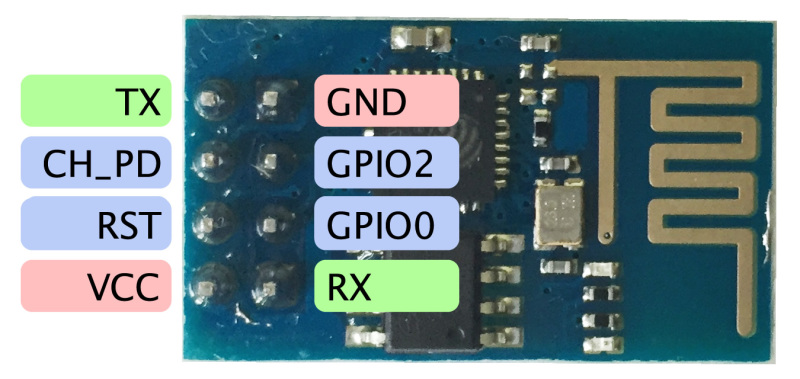
This is the first and simplest board using the ESP8266. It allows to attach serial lines, and only breaks out two GPIO pins for native usage. This is also the cheapest and can be purchased from many chinese suppliers at 2.5 dollars.
ESP-03
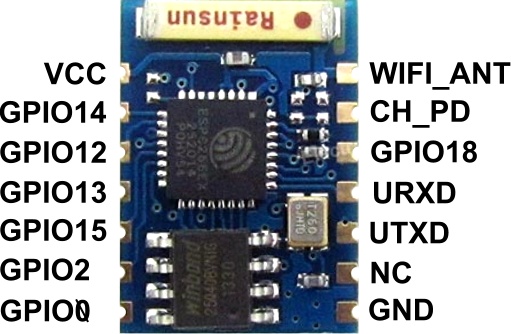
This is the second generation board, breaking out more GPIO pins, and using a different antenna, plus an external antenna connector.
Circuit Diagram/How to Use?
There are several techniques and IDEs are available by using ESP8266 Wi-Fi modules. The Arduino IDE is the most commonly used technique. Now, let’s learn the workings of the Arduino IDE using the ESP8266 Wi-Fi module. The circuit diagram/how to use the Arduino IDE or FTDI device is illustrated in the below figure.
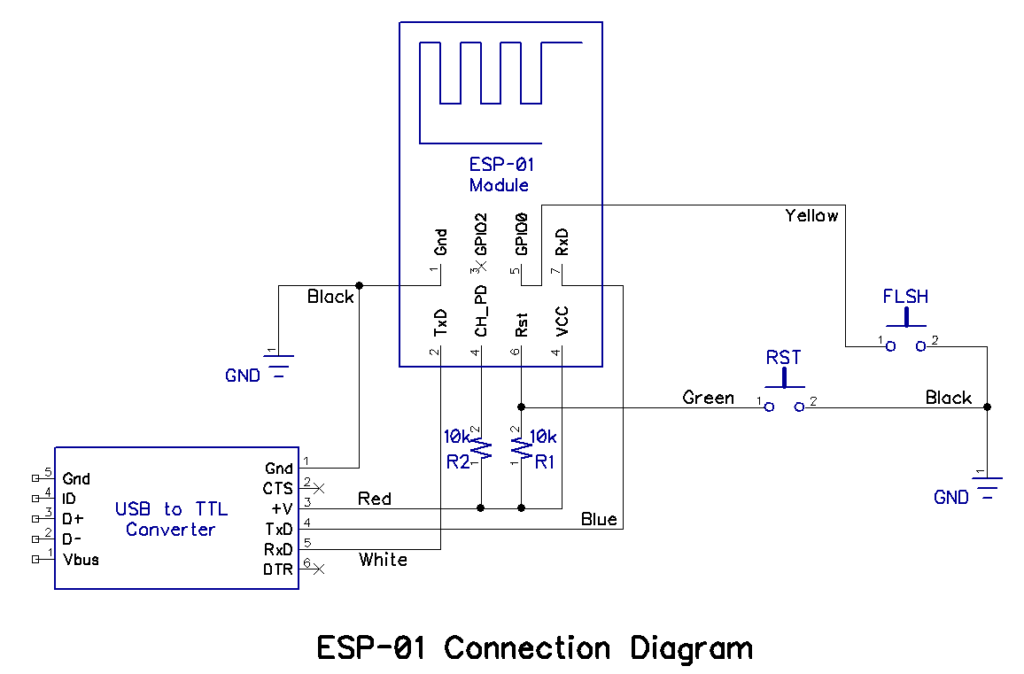
The power supply required for the ESP8266 module is only 3.3 Volts. If it is more than 3.7 Volts, then the module gets damaged, and this leads to circuit failure. Hence it is necessary to program the ESP-01 Wi-Fi module by using either Arduino board or FTDI device, which supports the programming 3.3 Volts supply. It is recommended for the user to buy either one FTDI device or an Arduino board.
The most common issue with the ESP-01 module is the powering up issue. The 3.3 Volts pin on the Arduino board is used to power up this module or simply we can use the potential divider. So, to provide a minimum current of 500 mA, the voltage regulator that supports 3.3 Volts is mandatory. The LM317 voltage regulator does this work very easily and effectively.
The programming switch SW2 is pressed to connect the GPIO-0 pin to the GND (Ground). This is the programming mode to upload the code by the user. After uploading the code, the switch is released.
What is it good for?
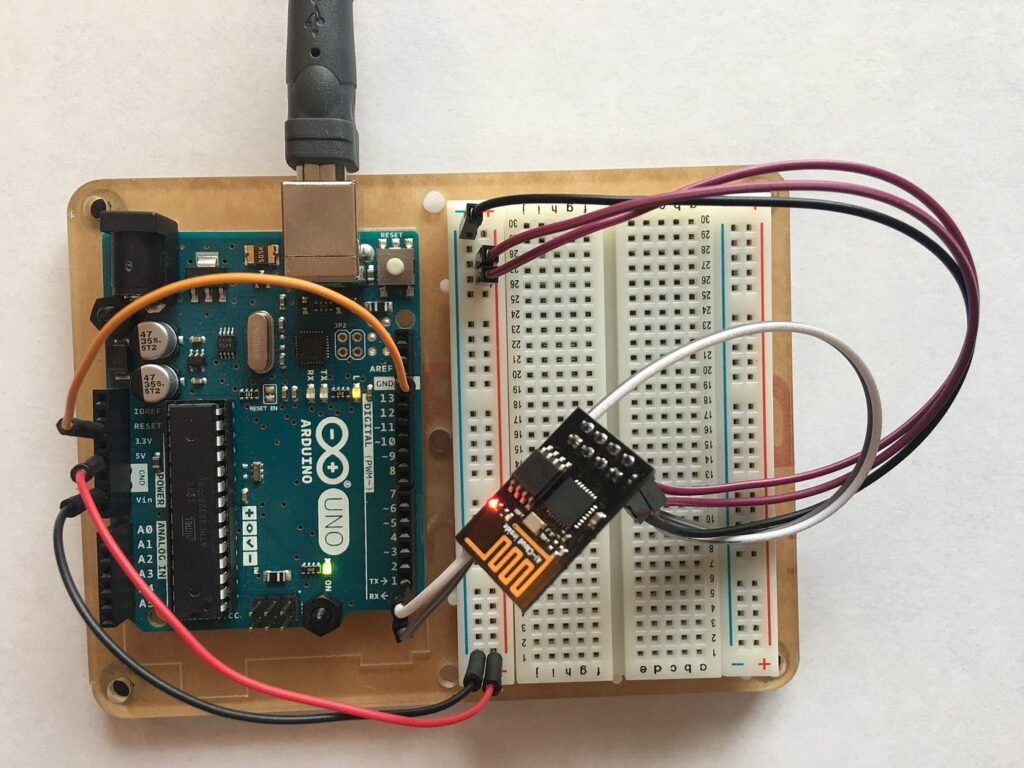
ESP8266 can be used as an external Wifi module, using the standard AT Command set Firmware by connecting it to any microcontroller using the serial UART, or directly serve as a Wifi-enabled microcontroller, by programming a new firmware using the provided SDK.
The GPIO pins allow Analog and Digital IO, plus PWM, SPI, I2C, etc.
This board has been around for almost a year now and has been used mostly in IoT contexts, where we want to add connectivity for example to an Arduino project. A wide adoption has been facilitated by the very modest price, ranging from 2.50 to 10 USD depending on the features offered by the manufacturers.
Where to Use/Applications of ESP8266 Wi-Fi Module
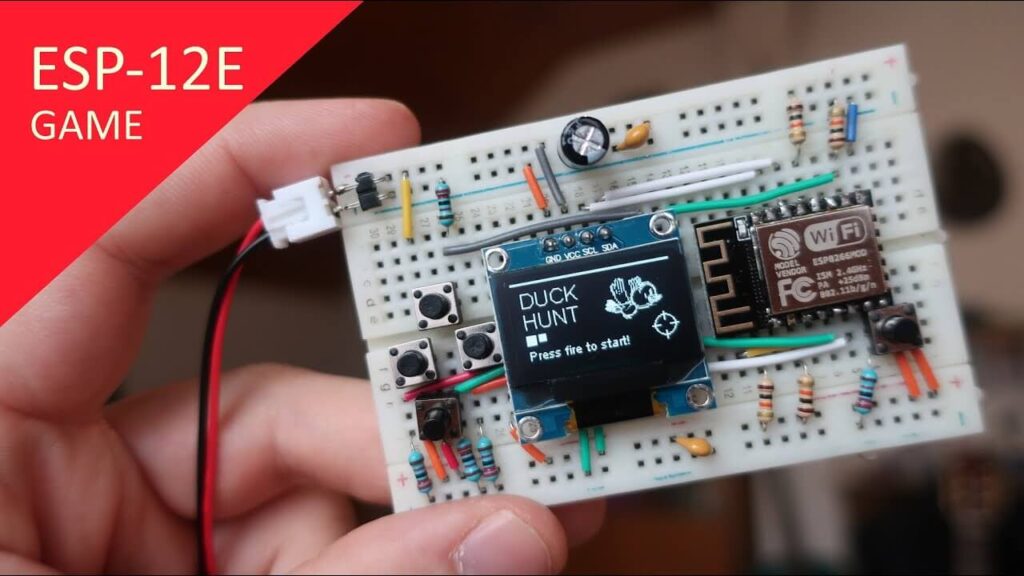
The applications of the ESP8266 Wi-Fi module are given below
-
- Access points portals
- IoT projects
- Wireless data logging
- Used in learning the networking fundamentals
- Sockets and smart bulbs
- Smart home automation systems
The ESP32 is an alternative ESP8266 Wi-Fi module. It is a standalone and most powerful module.
Thus, this is all about an overview of the ESP8266 Wi-Fi module datasheet – definition, pin configuration, specifications, circuit diagram/How to use, where to use/applications, and its alternatives. The ESP8266 Wi-Fi module is a User-friendly module because it can be programmed with the help of Arduino IDE. This module can also be used to build ESP8266 wifi module projects. The other standalone modules like ESP-12 and ESP-32 are also commonly used for IoT applications development and to achieve internet connection to the project. Here is a question for you, “What are the advantages of the ESP8266 Wi-Fi module? “


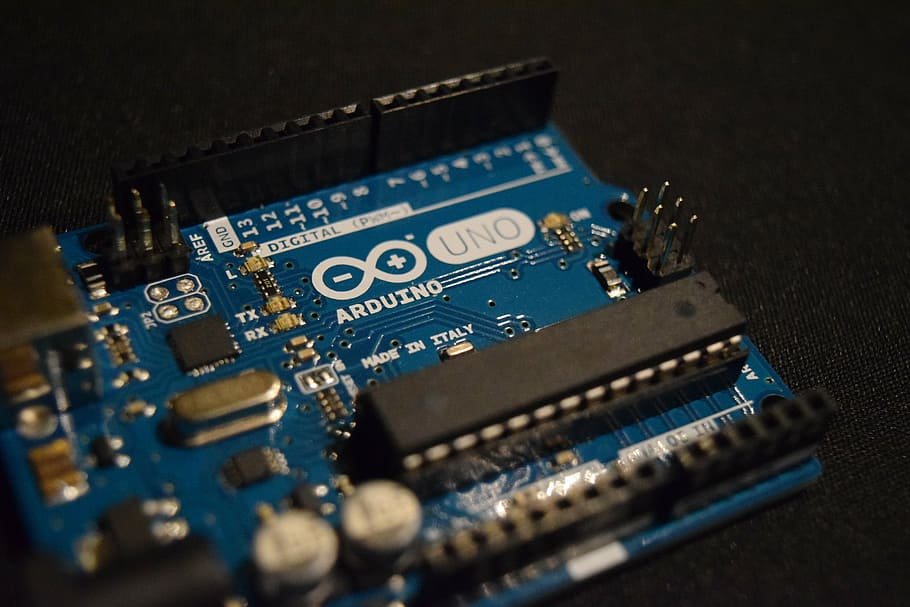
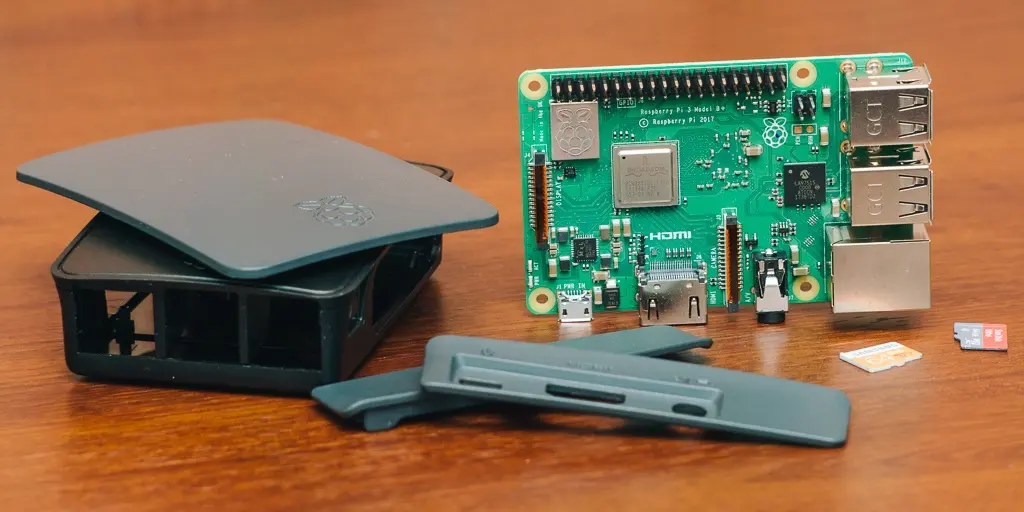
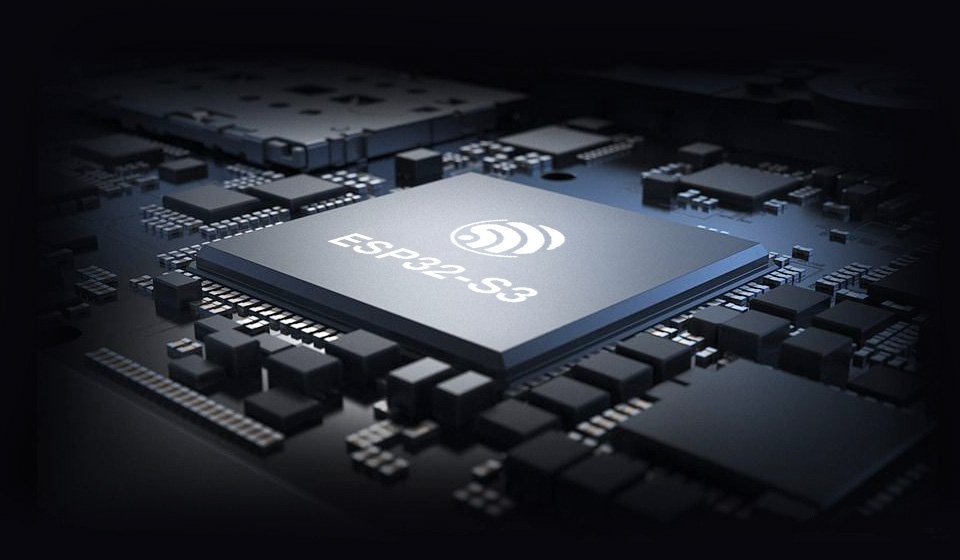
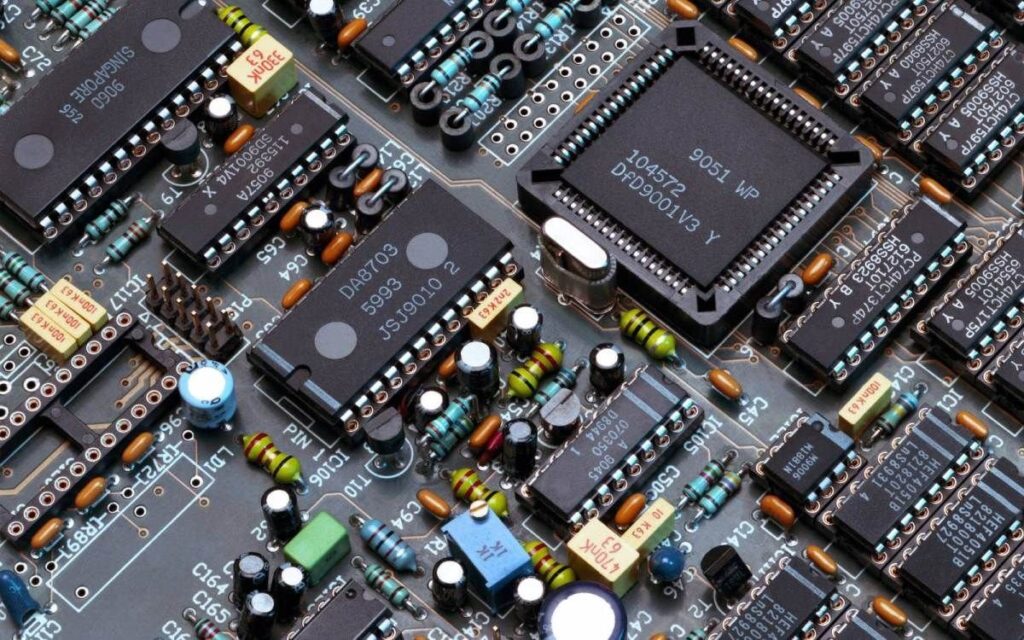
I was studying some of your content on this site and I conceive
this website is really informative! Keep putting up.